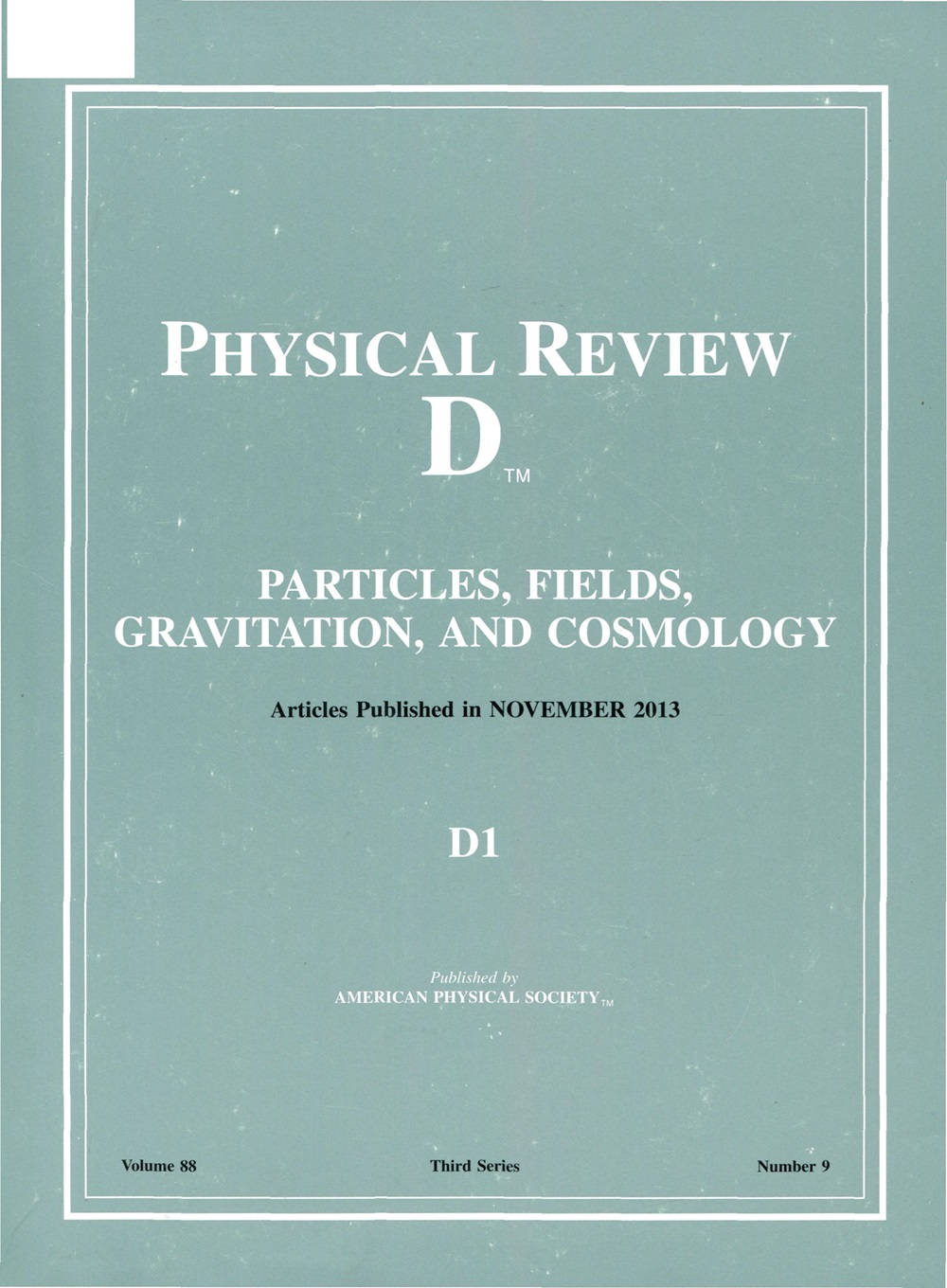如何创造宇宙
IF 5
2区 物理与天体物理
Q1 Physics and Astronomy
引用次数: 0
摘要
我们建立了一般条件,在这种条件下,物理定律的进化导致物质的能量动量张量守恒的违反,从而导致物质的创造或毁灭。它们利用了与自然常数对偶的全局时间变量。这样的时间以一种可以被解释为基本常数的化学势的速率流动(类似于基于等熵流体的现象学时钟)。违反能量守恒的一般条件是物质参数作为重力钟的函数演化,反之亦然。这个框架可以设想为自然选择场景运行的环境,由自然常数值的随机突变(或者根据上述定义的时间,法律中的任何其他可变性)提供动力。最重要的功能是创造物质,然后保存物质。这可以在一个环境中完成,其中差分不变性是一个可能的理论,与突变建模,例如,吸收马尔可夫链。在这样的设置中,具有固定常数的差态不变状态(或任何邻近状态)应该是吸收状态。因此,约翰·惠勒(John Wheeler)“杂乱无章”的混沌宇宙开端在这个模型中找到了实现,它自身的消亡和秩序的建立以及看似不变的规律也是对模型的一种预测。2025年由美国物理学会出版本文章由计算机程序翻译,如有差异,请以英文原文为准。
How to make a universe
We establish the general conditions under which evolution in the laws of physics leads to violations of the conservation of the energy-momentum tensor for matter, resulting in matter creation or destruction. They make use of global time variables canonically dual to the constants of nature. Such times flow at a rate determined by what can be interpret as the chemical potential of the fundamental constants (in analogy with phenomenological clocks based on isentropic fluids). The general condition for violations of energy conservation is then that a matter parameter evolves as a function of a gravity clock or vice versa. This framework can be envisaged as the environment within which a natural selection scenario operates, powered by random mutations in the values of the constants of nature (or indeed any other variability in the laws in terms of the times defined above). The prize function is the creation of matter, followed by its preservation. This can be accomplished in an environment where diffeomorphism invariance is among the possible theories, with mutations modeled, for example, on the absorbing Markov chain. In such a setup, the diffeormorphism invariant state with fixed constants (or any nearby state) should be the absorbing state. John Wheeler’s “higgledy-piggledy” chaotic cosmic start therefore finds a realization in this model, where its own demise and the establishment of order and seemingly immutable laws is also a prediction of the model. Published by the American Physical Society 2025
求助全文
通过发布文献求助,成功后即可免费获取论文全文。
去求助
来源期刊

Physical Review D
物理-天文与天体物理
CiteScore
9.20
自引率
36.00%
发文量
0
审稿时长
2 months
期刊介绍:
Physical Review D (PRD) is a leading journal in elementary particle physics, field theory, gravitation, and cosmology and is one of the top-cited journals in high-energy physics.
PRD covers experimental and theoretical results in all aspects of particle physics, field theory, gravitation and cosmology, including:
Particle physics experiments,
Electroweak interactions,
Strong interactions,
Lattice field theories, lattice QCD,
Beyond the standard model physics,
Phenomenological aspects of field theory, general methods,
Gravity, cosmology, cosmic rays,
Astrophysics and astroparticle physics,
General relativity,
Formal aspects of field theory, field theory in curved space,
String theory, quantum gravity, gauge/gravity duality.
 求助内容:
求助内容: 应助结果提醒方式:
应助结果提醒方式:


